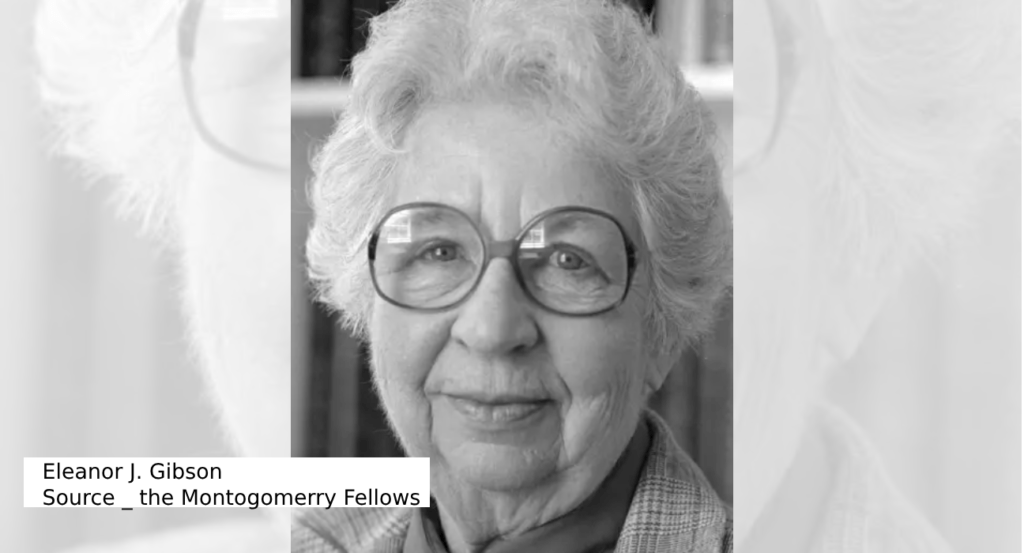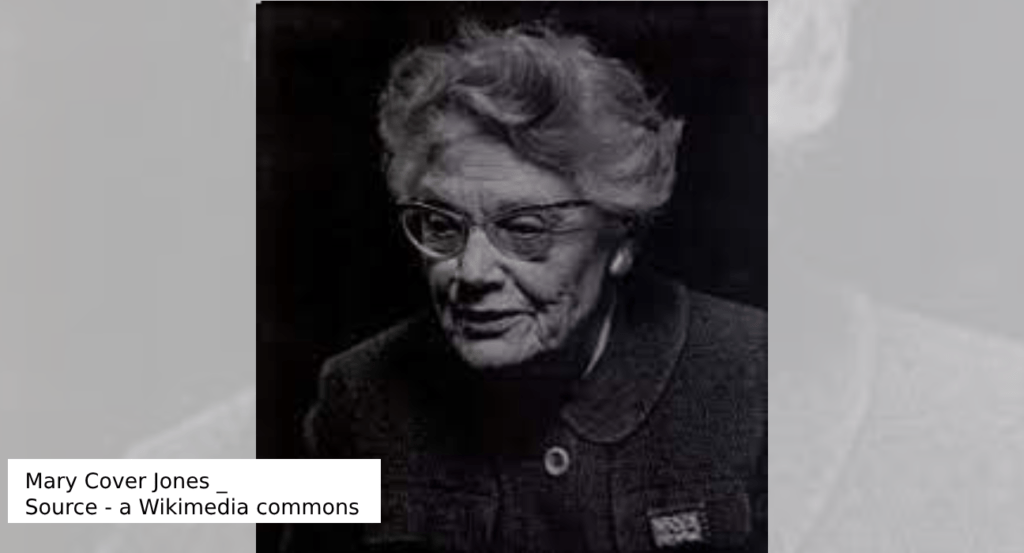Most of us may have heard the names of Sigmund Freud, Wilhelm Wundt, and Abraham Maslow and their contributions to the discipline of psychology innumerably. But have you ever wondered why the names of female psychologists and their works are often left out when listing the notable contributions made in this field?
The dominance of male thinkers and their ideologies make it seem that women had a minimal number of contributions to the discipline. About 12% of the psychologists in the US during the 1900’s were women but not many of them ever came under the limelight for their works. This could be due to the multiple situational constraints they might have faced about their economic status and most importantly, their gender. The history of female psychologists is rich and they have contributed to the field of psychology in a very notable manner. Some of the names of female psychologist and their works are listed below.
1. Karen Horney
Karen Horney (1885-1952) was a German-American psychoanalyst. She was primarily known as a neo-Freudian. She is best known for her critique of Freud’s theory and his emphasis on penis envy. In The Flight from Womanhood, for example, Horney (1932) noted that the emphasis on phallus and the bias arose in psychoanalysis because the founders of this discipline were mainly male.
The theories of psychoanalysis pioneered by Sigmund Freud can never be completely elucidated without attaching them to its epilogue, i.e., neo-psychoanalysis. Neo-psychoanalysts contradicted Freud’s view that humans are always motivated by their sexual and aggressive drives and rather focused on the importance of love, care and communion as pivotal drives in one’s life.
Karen Horney was one among these neo-psychoanalysts who actively contradicted Freud’s ideas further pioneering the field of feminist psychology. One of the major ideas that Freud proposed was that of Penis Envy, where he explained that women feel inferior because of the absence of the organ. Horney, in contrast to penis envy, pioneered the concept of womb envy which is the envy that is developed within men due to the absence of a womb in them and their inability to produce a child. She is also well known for developing the theory of neurosis.
She thought that basic anxiety brought on by interpersonal relationships was the origin of neurosis. According to Horney, several circumstances could lead to basic anxiety and, consequently, neurosis. She proposed that childhood experiences such as excessive adulation can be a contributing factor to neuroticism. Some other contributing factors could be unfairness, prejudice, being cut off from other kids, and disregard for necessities.
Read Books from Karen Horney
- Our Inner Conflicts: A Constructive Theory of Neurosis
- Neurosis and Human Growth: The Struggle Toward Self-Realization
2. Mary D. Salter Ainsworth
Mary D. Salter Ainsworth (1913 – 1999), was an American-Canadian developmental psychologist. She is famous for her seminal work on attachment style or the way of relating to a caregiver. A review of the General Psychology Survey (2002) revealed that Mary Ainsworth was the 97th most cited psychologist (Haggbloom, 2002). Ainsworth created the “strange situation”, a simple assessment method where researchers separated infants from their caregivers and then reunited them. The infants’ behaviour towards their caregivers was then studied. The strange situation paved the way to study the early emotional attachment between children and their main caregiver.
Although Ainsworth developed this concept to study child development, attachment styles have become a popular concept that has been adapted to apply to adult romantic relationships. Her research on attachment style led to a great deal of study being done on the impact of these styles on the overall development of the individual in the future.
Also Read: Top 5 Psychologists Around the World
3. Eleanor Jack Gibson

Eleanor Jack Gibson (1910-2002) was an American psychologist who was interested in studying the development of reading in children as well as how children develop visual perception. You must as heard about the very famous “visual cliff” experiment.
With the idea of studying depth perception in human infants, Eleanor Gibson with her Colleague Richard Walk designed the visual cliff experiment where human infants (6-14 months old) were placed in the centre of a board that has a deep side and a shallow side. Gibson found that 90% of the infants would crawl toward the shallow side rather than the deep side. This experiment reveals that infants have discrimination between depths as young as when they have started crawling.
After her Visual Cliff Experiment, Gibson was awarded the APA Award for Distinguished Scientific Contribution. Besides her seminal work on Depth Perception, Eleanor Gibson and her husband James Gibson have also developed the Gibsonian ecological theory of development. She was also interested in differentiation theory, which states that experiences and objects in the environment are recognised and categorised by humans by the identification of distinct features.
4. Anna Freud
Anna Freud (1895-1982) was a British psychoanalyst and one of the founders of psychoanalytic child psychology. When the name Freud comes into the picture, we always think about Sigmund Freud, the father of psychoanalysis. Anna Freud was Sigmund Freud’s youngest daughter and her work had a major impact on the psychoanalysis field of thought.
Even though Sigmund Freud was against applying psychoanalysis to children, Anna Freud applied psychoanalysis to the wider age range (although she did believe that children younger than six should not be psychoanalysed). In 1941, she formed the Hampstead Nursery with Dorothy Burlingham. The nursery served as a psychoanalytic program and home for homeless children (Cherry, 2023).
Anna Freud expanded on the theories of Sigmund Freud and wrote the book The Ego and the Mechanisms of Defense (1936). This seminal work expanded on the concept of defence mechanisms and listed the different types of defence mechanisms the ego uses. Most of the mechanisms listed by Anna Freud such as denial and repression are used today not only as part of psychological jargon but also as part of layman’s conversations.
Read more books by Anne Freud
- Normality and Pathology in Childhood: Assessments of Development
- The Ego and the Mechanisms of Defense
5. Mary Whiton Calkins
Mary Whiton Calkins (1863-1930) remains a key figure in the history of psychology. It would be a crime to not talk about Calkins when we’re listing down famous women psychologists in history. Calkins completed her Ph.D. from Harvard University but was denied the degree due to gender discrimination. She was the first woman to complete the doctoral program at Harvard. Calkins is known for her research on dreams, self and memory.
Mary Whiton Calkins made significant contributions to the field of psychology, which included developing the paired association technique and pioneering self-psychology. In her approach to self-psychology, Horney emphasized that the conscious self should be the central focus of psychological study. She established the first psychological library for women at Wellesley College. She also became the first women president of the American Psychological Association. In 1903, Calkins ranked twelfth in a listing of fifty top-ranked psychologists (Furumoto, 1990).
6. Mary Cover Jones

Mary Cover Jones (1896-1987) also “the mother of behaviour therapy” was an American psychologist, known for her developmental research and contribution to behavioural therapy. In the 20th century, the field of behaviour therapy was dominated by male figures. However, Mary Cover Jones made remarkable contributions in this field.
Intrigued by John Watson’s Little Albert experiments, Cover Jones began to question whether these techniques could be used to make an individual less fearful rather than induce fear. Thus, came the “Little Peter Experiments. This study paved the way for the development of the systematic desensitization technique in behaviour therapy. Mary Cover Jones participated in the Oakland Growth Studies, which was a longitudinal study with 5th and 6th graders as subjects. Her involvement in this study led to her publishing almost 100 research papers. Cover Jones also served as the president of the American Psychological Association’s Division of Development Psychology. Her contribution to the field of psychology is tremendous and appreciated all over the world.
7. Mamie Phipps Clark
Mamie Phipps Clark (1917-1983) researched and studied the fields of race, self-esteem, and child development. She made history by being the first black woman to complete her doctorate from the University of Columbia. She was only the second person to do so in Columbia University history. As she focused on the concept of self-esteem, especially in BIPOC children, she wrote her thesis on the formation of racial identity and self-esteem. Her work paved the way for further research on the development of self-concept in BIPOC children.
Mamie Phipps Clark’s research namely “The Clark Doll Test” played a significant role in the Brown vs. Board of Education case. This case is notable as it led to the ruling of racial segregation being harmful. The researchers discovered that not only would 59% of the children identify the Black doll as the “bad” one, but nearly 33% selected the white doll as the one they most resembled (Clark, 1947).
Minorities and female psychologists are often overlooked when the history of psychology is mentioned. Despite Mamie Phipps Clark’s notable contribution to the field of psychology, today, her name is only mentioned in passing in psychology textbooks.
8. Marie Jahoda
Marie Jahoda (1907-2001) was from Vienna Austria. An Austrian-British Psychologist, she made many important contributions to the field of psychology. Deeply interested in the aspects of unemployment, Jahoda with her colleagues presented the Marienthal: The Sociography of an Unemployed Community. The paper explained not only the devastating economic effects of unemployment during the Great Depression but also explained how this had an impact on the individual’s self-concept.
She studied and delved into many research fields in psychology and was deeply invested in research on motivation and work satisfaction. Her research helped to merge the gap that existed between sociology and psychology. More importantly, her work emphasized how social factors play an important role in the context of psychological functioning.
9. Leta Stetter Hollingworth
Leta Stetter Hollingworth (1886-1939) was from America. She worked in the field of clinical psychology, women’s psychology and educational psychology. Hollingworth was a student of Edward Thorndike. Hollingsworth was especially interested in studying the giftedness in children. Therefore, she is known for her contribution to intelligence testing and giftedness.
While some of her contemporaries believed intelligence was largely the result of genetic inheritance, Hollingworth felt education and environment played a more critical role (Cherry & Swaim, 2023). Her seminal works for women’s psychology helped to dissipate many myths and misconceptions that came into the way for women’s rights. It was Leta Stetter Hollingworth who came up with the term “gifted” for children with exceptional skills. Hollingsworth and Lewis Terman both had extreme respect for each other’s seminal work on gifted children.
Leta Stetter Hollingworth discovered that while there were more males than women in mental institutions, this was more often the result of social than biological differences: women with intellectual disabilities were more likely to be ignored and kept alone at home than to be committed to an institution (Hollingworth, 1914).
10. Melanie Klein
Melanie Klein (1882-1960) was a psychoanalyst and also an Austrian-British author. She is known for developing play therapy and the theory of object relations. Earlier, Freudian psychoanalysis had been sceptical about how children could be analysed properly with the use of psychoanalytic techniques, as their minds were too underdeveloped to study the unconscious.
But Melanie Klein delves into this field and was one of the first who studied the analysis of a child. Klein believed that by observing and studying how children manipulate their toys and play with them, one could begin to understand a child’s inner world. Melanie Klien aimed to understand how humans evolve — from pleasure-seeking beings in their early childhood to more adults later in life. She developed the concept of ambivalence, the first marker that an individual is on the path to maturity. Klein’s (1921) theory of the unconscious, which prioritized the bond between a mother and her kid over that between a father and his child, shaped the core tenets of the Object Relations School of psychoanalysis. Klein stressed the importance of the first four to six months after delivery.
11. Anne Anastasi
Anne Anastasi (1908-2001) was an American Psychologist. She pioneered in the field of psychometrics. Anne Anastasi wrote Psychological Testing. Today this book is cited and used as a seminal resource by students in psychometric study. This text is still in print today and shares the process of test construction and gives details about the popular tests and the process of test interpretation.
Anastasi who initially wanted to make a career in mathematics was influenced by Charles Spearman’s paper on correlation coefficient. This convinced her that she could delve into the discipline of psychology and mathematics at the same time. In her 1958 paper, Heredity, Environment and the Question Anastari argued that traits were not solely hereditary and the role of environment is important. She also insisted on focusing on the nature and nurture interaction rather than indulging in the debate of nature vs. nurture. Anastasi also contributed to the Mental Measurement Yearbooks series and she was the only reviewer to make it into all of the eight original yearbooks.
12. Christine Ladd-Franklin
Christine Ladd-Franklin (1847-1930) was an expert in many fields. She was a logician and mathematician. She was also an American psychologist and worked in the laboratory of Hermann von Helmholtz. Christine Ladd-Franklin was also one of the first women who joined the American Psychological Association. Ladd-Franklin published her theory of colour vision and published her book Color and Color Theories in 1929. Ladd-Franklin believed that peripheral vision which is the responsibility of cones and rods is the most primitive because of their ability to detect things at night (night vision) and detection of movement. Ladd-Franklin also talked about how colour vision evolved in different stages. She believed the three stages to be — achromatic vision, blue-yellow sensitivity and red-green sensitivity. Since the red-green sensitivity was the last stage of the evolution, she gave this as the reason for colour blindness.
13. Margaret Floy Washburn
Margaret Floy Washburn (1871-1939) was a leading woman psychologist. She was the first woman to obtain a Ph.D. in psychology. Washburn is known for her seminal work on animal behaviour and motor theory. A review of the General Psychology survey (2002) lists Washburn as the 88th most cited psychologist. Washburn was the second woman president of the American Psychological Association, second to Mary Whiton Calkins. She was also the first woman psychologist elected to the Society of Experimental Psychologists (Boring, 1938). Washburn also developed the motory theory which connected thoughts back to bodily movements. Washburn wrote the book The Animal Mind: A Textbook of Comparative Psychology in 1908. The book was a compilation work on experimental work conducted on animals and it was very comprehensive.
Margeret Floy Washburn was one of the woman psychologists who made their name at a time when women in academia were not given much credit.
14. Eleanor Emmons Maccoby
Eleanor Emmons Maccoby (1917-2018) was an American psychologist. She made many scholarly contributions in the field of gender studies. She was also known for her contribution to developmental psychology. Maccoby wrote the book, The Development of Sex Differences (1966). She studied and wrote about how biological impact was the sole indicator of gender differences and other factors held a profound impact. On the contrary other factors like social, cultural and the influence of parental figures had an impact on how individuals acquire gender roles and preferences.
In the 1990s, she focused on the longitudinal study of how divorce impacted children. She wrote two books Dividing the Child and Adolescents After Divorce. She chaired the psychology department of Standford and was the first woman to do so. She has received the G. Stanley Hall Award (1982) and the American Psychology Foundation Lifetime Achievement Award (1996) (Cherry and Swaim, 2023).
15. Virginia Satir
Virginia Satir (1916-1988) was honoured with the title “Mother of Family Therapy” for her work in the field of family reconstruction therapy. Satir’s Transformational Systemic Therapy is known as the Satir Growth Model. This model emphasizes engaging the inner self and analyzing a person’s situation and choices. Satir believed that superficial issues were the main cause of problems as they tended to mask the deeper ones.
Today, Virginia Satir is known as the family therapist guru. She has courses that she delivered at the Mental Research Institute and these are now available in a book she wrote called Conjoint Family Therapy. The book emphasizes how self-worth is important for an individual. One of the important figures in the field of experiential family therapy, Virginia Stir’s methodology has influenced and reached across many branches of psychotherapy today.
People making
Check out this Book Recommendations made just for you
- The Second Sex by Simone De Beauvoir
- The female brain by MD Brizendine, Louann
- The Body Keeps the Score: Mind, Brain and Body in the Transformation of Trauma by Bessel van der Kolk
- The Dance of the Dissident Daughter by Sue Monk Kidd
- Eminent Indian psychologist Braj Bhushan
Numerous women have played a significant role in the early scientific advancement of psychology. Psychology is one of the fields that has had women make significant and profound contributions. While in the past, their work was often not represented or credited enough, today, over half of the members of the American Psychological Association are women, and 75 per cent of graduate students in psychology are female, according to a 2017 report.













Leave feedback about this